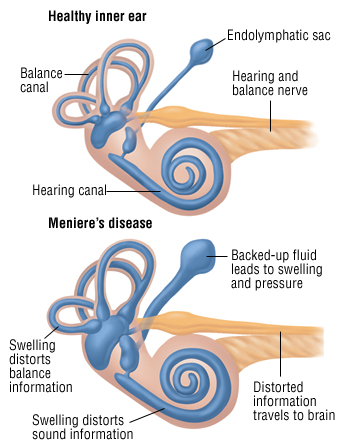Ménière’s Disease: Researchers Uncover How Ear Drainage System Is The Culprit By Using Synchrotron X-Ray Technology
Source: Ménière’s Disease Jun 01, 2020 4 years, 10 months, 3 weeks, 4 days, 20 hours, 25 minutes ago
Ménière’s Disease: The disease is an inner-ear condition that can cause vertigo, a specific type of dizziness in which you feel as though you’re spinning. It also can cause ringing in your ear (tinnitus), hearing loss that comes and goes, and a feeling of fullness or pressure in your ear. Usually, only one ear is affected. The hearing loss eventually can be permanent.

Ménière’s disease is a rare disorder that affects roughly around one in 1,000 people in the world.
A new research has uncovered a drainage system within the ear that may be assumed to play a role in the onset of the disorder.
Utilizing synchrotron x-ray technology, an advanced and powerful form of computer tomography (CT), the medical researchers at Uppsala University, Sweden, together with a Canadian team from Western University-Ontario have investigated the organs in the human inner ear which are very difficult to study.
The breakthrough research has been published in the journal Scientific Reports.
https://www.nature.com/articles/s41598-020-65110-0
Typically, ménière’s disease is a troublesome disorder, manifested in sudden onset of severe dizziness (vertigo) attacks, hearing impairment and tinnitus, and is thought to be caused by the accumulation of excess fluid in the inner ear.
It should be noted that the organ in the human inner ear which the researchers focused on is enclosed by the body’s hardest bone.
Utilizing the synchrotron x-ray imaging, the researchers were able to study the organ of balance with its surrounding blood vessels. Since the technology generates energy too high for use on living humans, donors’ temporal bones were used.
The obtained images of the inner ear were reconstructed to make a three-dimensional model in the software of the inside of the hard bone. This led the researchers to discover the drainage system that is thought to explain how the fluid in the inner ear is absorbed.
This breakthrough discovery may bring about an improved understanding of how and why Ménière’s disease arises and ways to treat it more effectively.
The revolutionary synchrotron imaging investigation was carried out in Saskatoon, in the Canadian province of Saskatchewan. The study was conducted jointly with Dr Sumit Agrawal and Dr Hanif Ladak, who are researchers in Ontario -Canada.
A synchrotron machine exists to accelerate electrons to extremely high energy and then make them change direction periodically. The resulting X-rays are emitted as dozens of thin beams, each directed toward a beamline next to the accelerator.
For more about
Ménière’s Disease, keep logging to Thailand Medical News.
